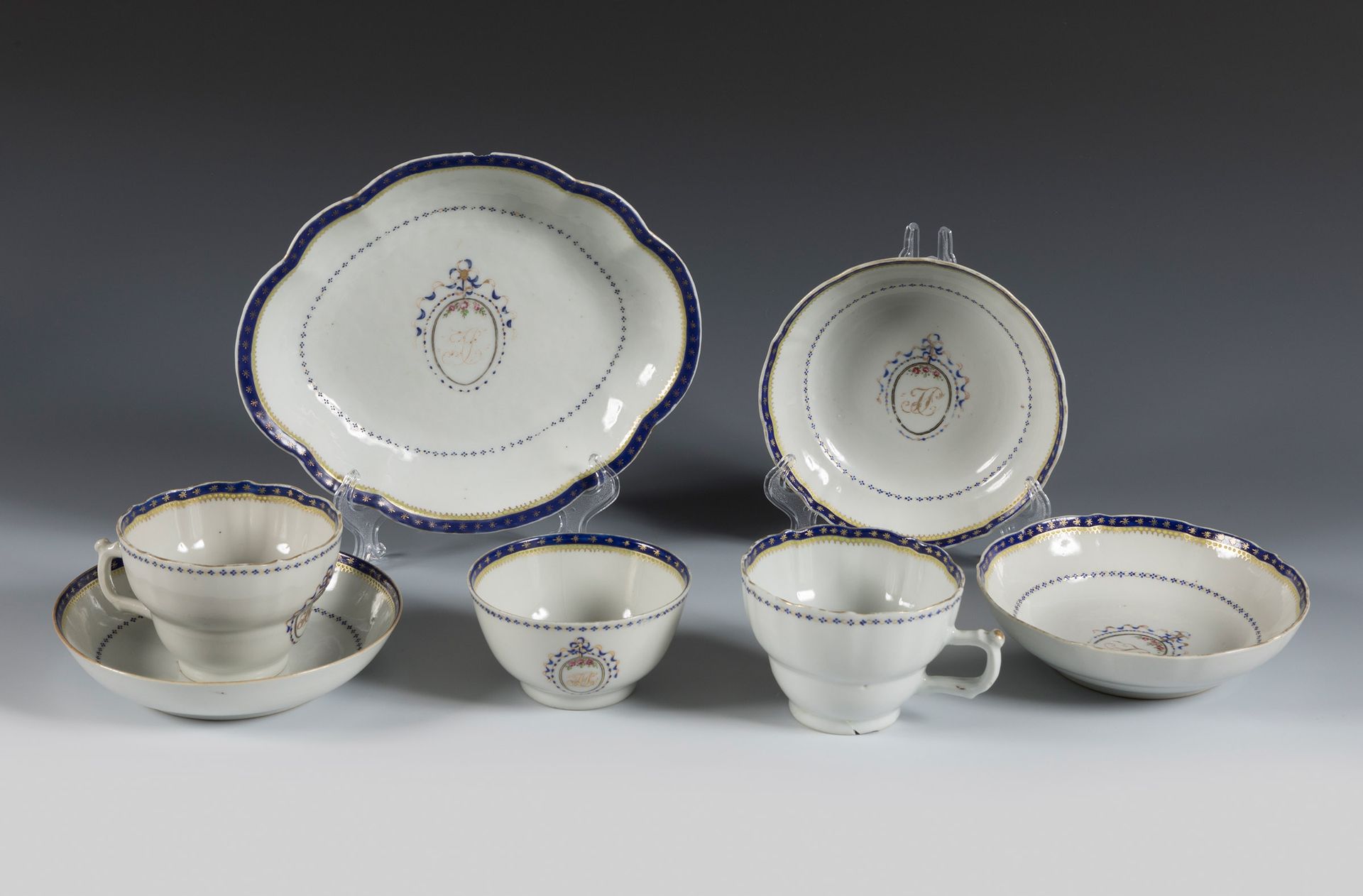Description
Set of tableware following Louis XVI models, Company of the Indies, late 18th century. Enamelled porcelain. Comprising two cups and saucers, a large bowl and a small bowl. It shows wear due to use and the passage of time. The cup has a hair and the bowl has a chip. Measurements: 6 x 11 x 9 cm (cup); 4 x 20 x 17 cm (bowl). This set of tableware was made in the East for export to Europe. It follows Louis XVI models in that it combines cobalt-blue and gilt ornamentation. All the pieces are also decorated with pavilions with initials on the inside, an aspect very much in the Louis XVI European royal taste. The subtle fillets that define the edges add distinction and delicacy. Objects of Chinese provenance, such as porcelain, have been known in the West since ancient times. As some of the Prado Museum's catalogues state, "Chinese manufacturers soon realised that Europeans were not experts in porcelain, and produced a type of porcelain for export, vulgar, even flawed, but which in the eyes of Westerners were genuine works of art. Once the trade was regularly organised, the India Companies supplied Chinese artists with European models, both for forms and decoration. Throughout the 18th century, the blue-and-white series persisted, but of inferior quality, which was then called Nanjing porcelain, and especially the famille rose type.
36
Set of tableware following Louis XVI models, Company of the Indies, late 18th century. Enamelled porcelain. Comprising two cups and saucers, a large bowl and a small bowl. It shows wear due to use and the passage of time. The cup has a hair and the bowl has a chip. Measurements: 6 x 11 x 9 cm (cup); 4 x 20 x 17 cm (bowl). This set of tableware was made in the East for export to Europe. It follows Louis XVI models in that it combines cobalt-blue and gilt ornamentation. All the pieces are also decorated with pavilions with initials on the inside, an aspect very much in the Louis XVI European royal taste. The subtle fillets that define the edges add distinction and delicacy. Objects of Chinese provenance, such as porcelain, have been known in the West since ancient times. As some of the Prado Museum's catalogues state, "Chinese manufacturers soon realised that Europeans were not experts in porcelain, and produced a type of porcelain for export, vulgar, even flawed, but which in the eyes of Westerners were genuine works of art. Once the trade was regularly organised, the India Companies supplied Chinese artists with European models, both for forms and decoration. Throughout the 18th century, the blue-and-white series persisted, but of inferior quality, which was then called Nanjing porcelain, and especially the famille rose type.
